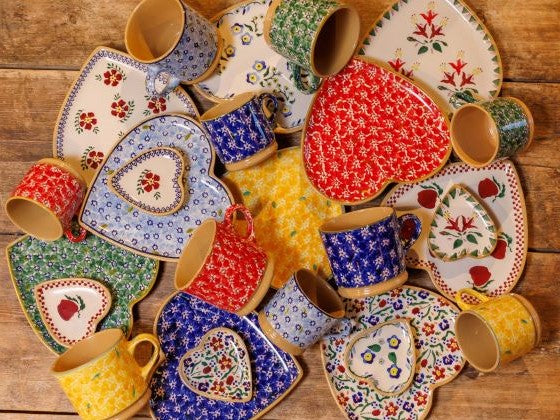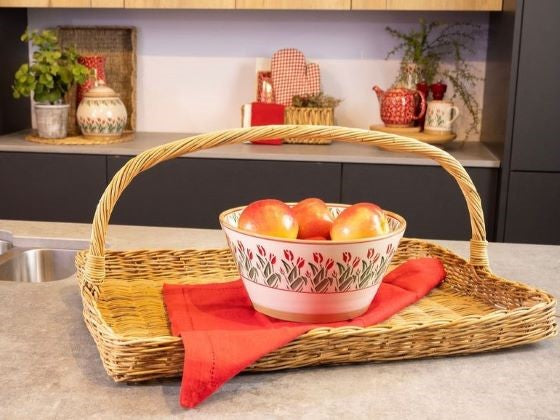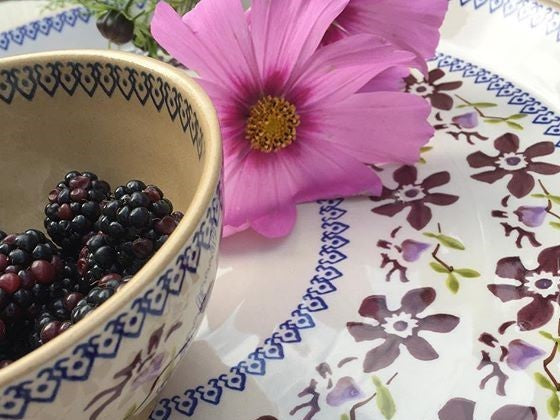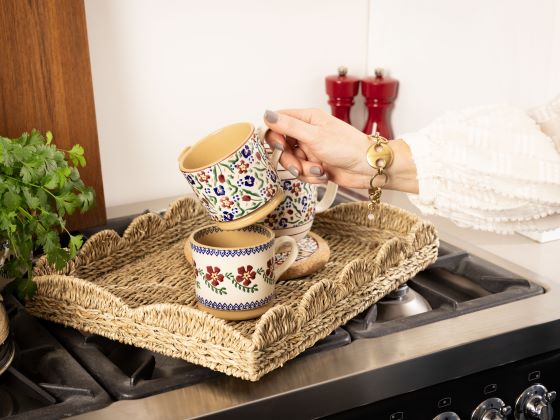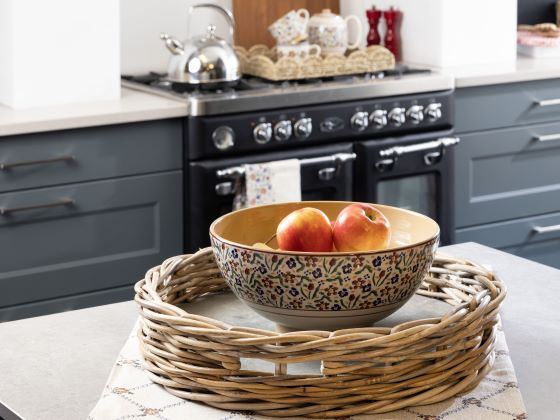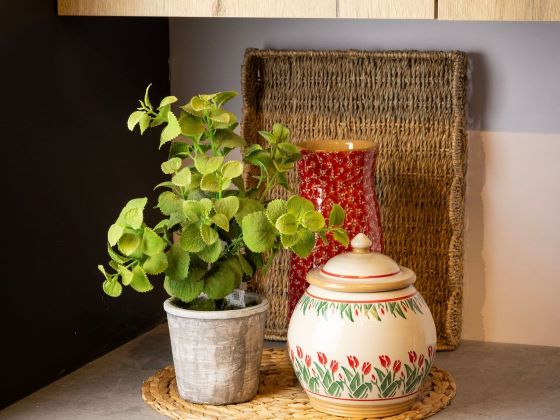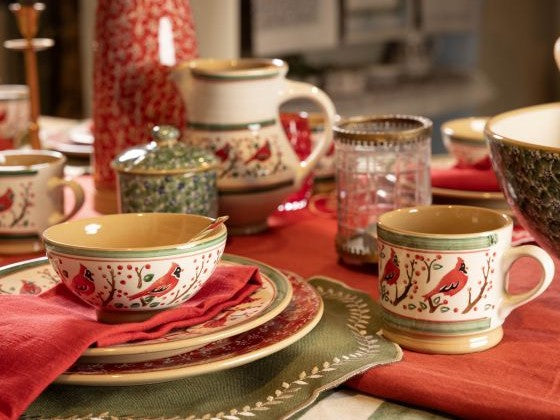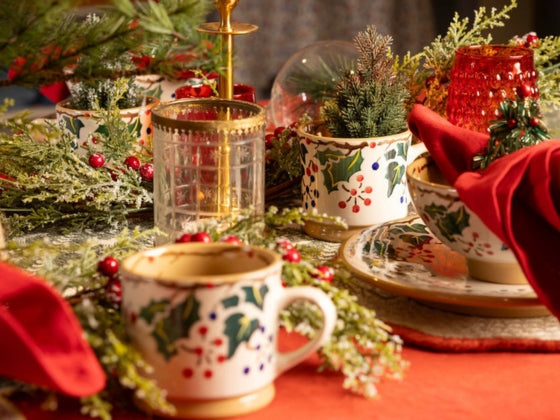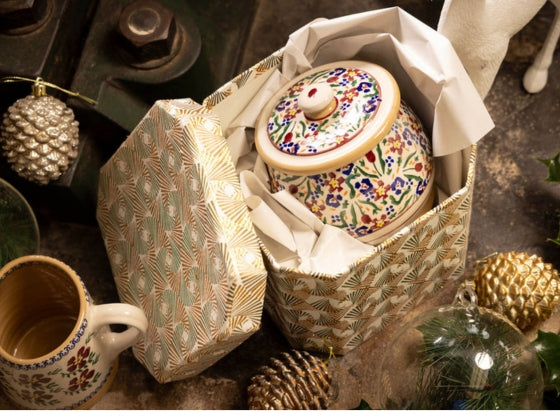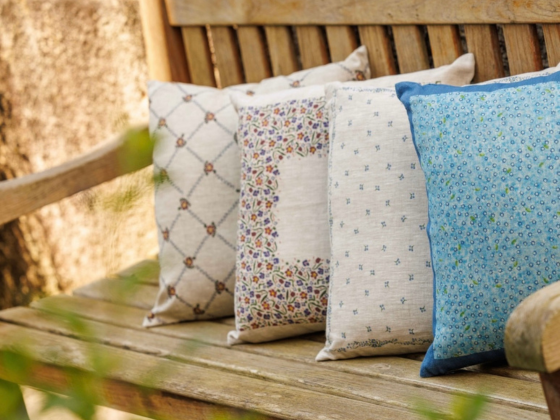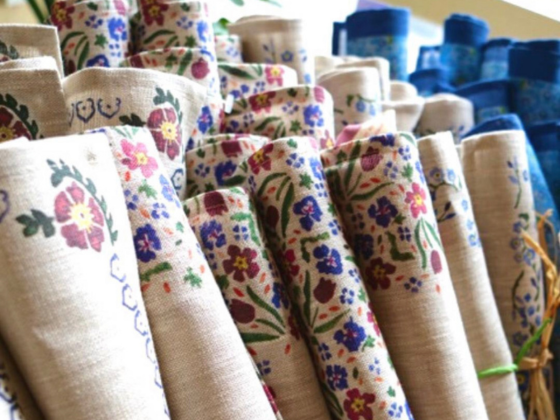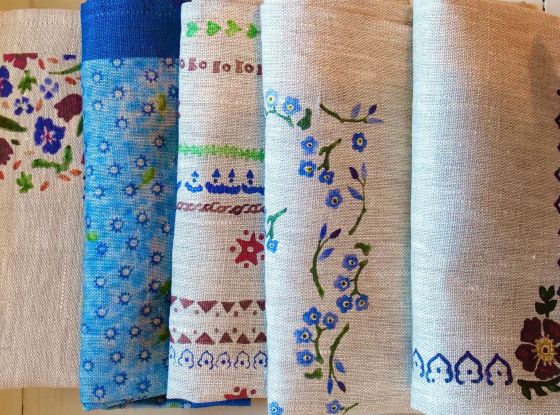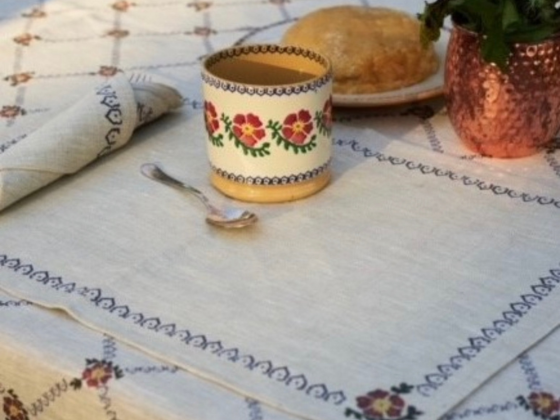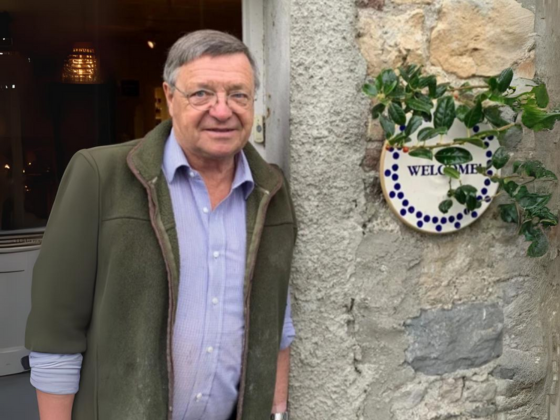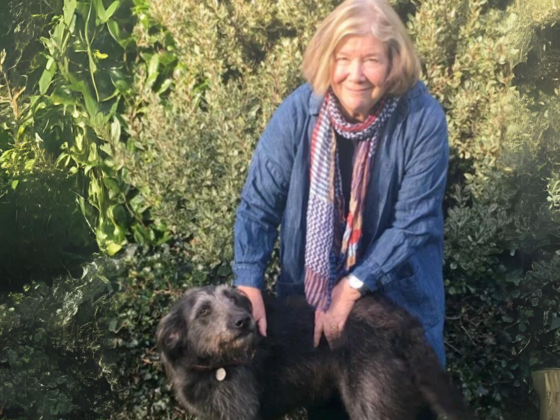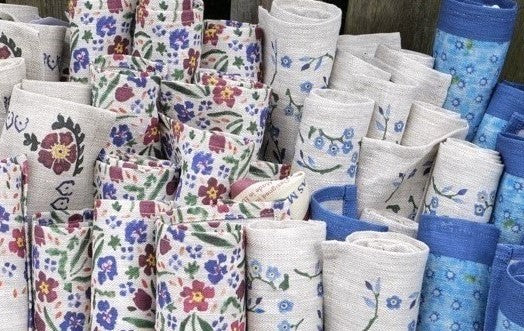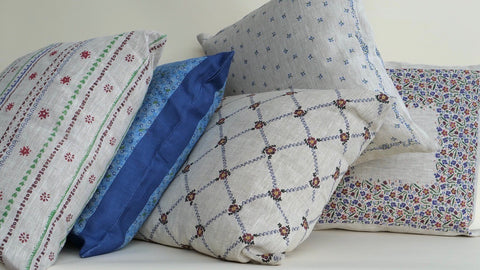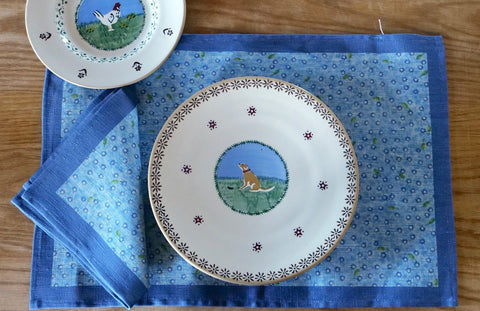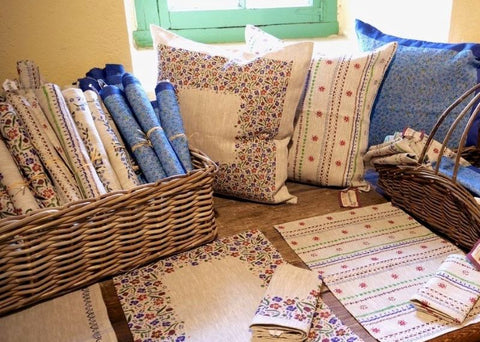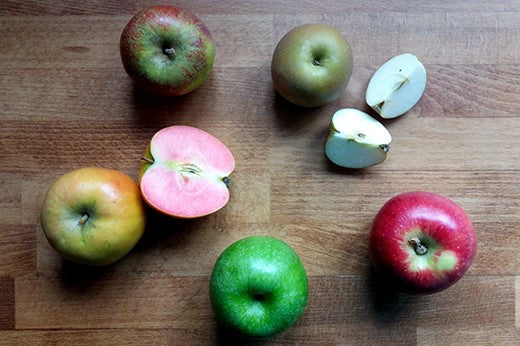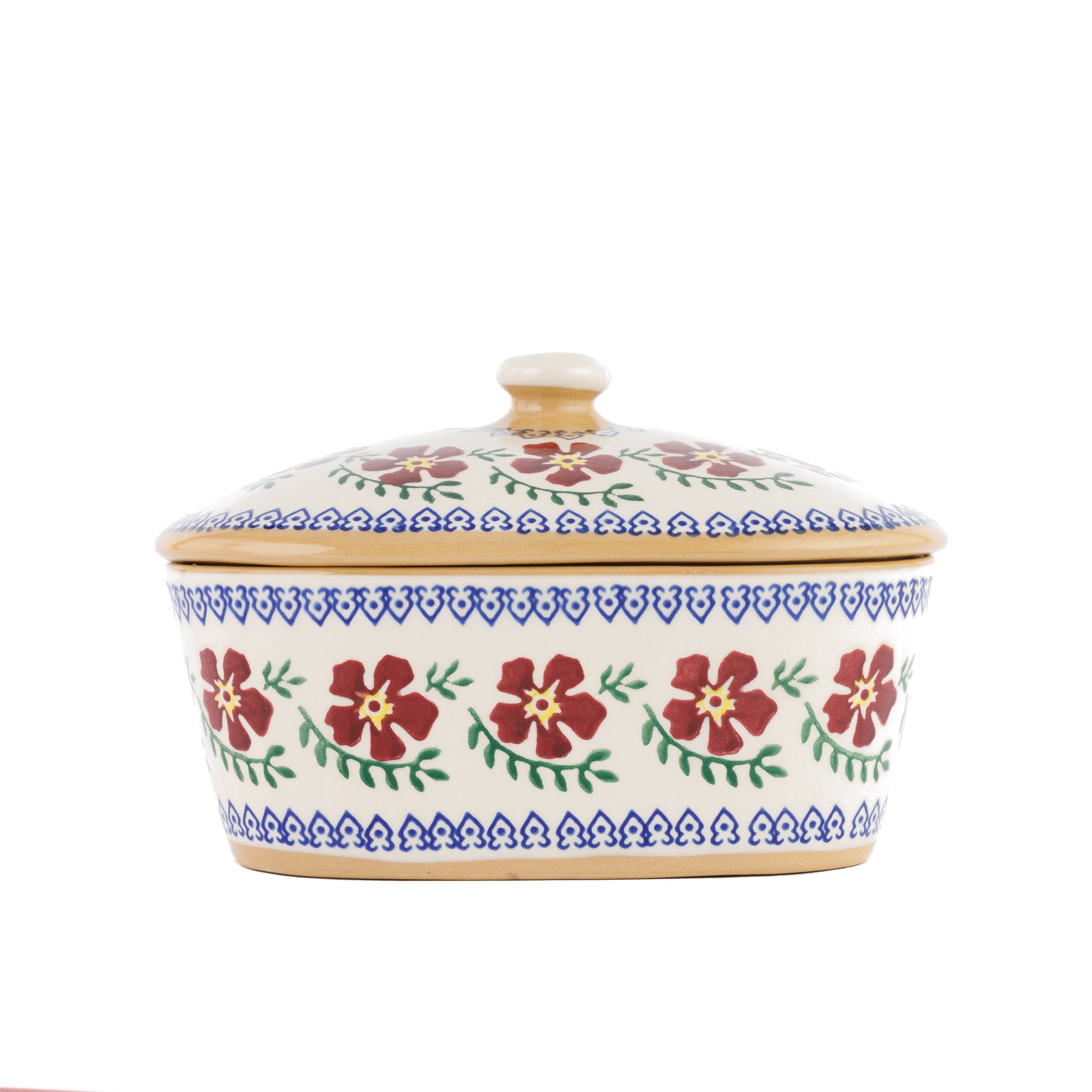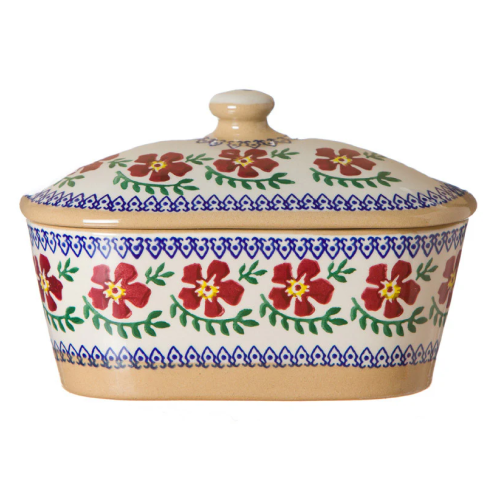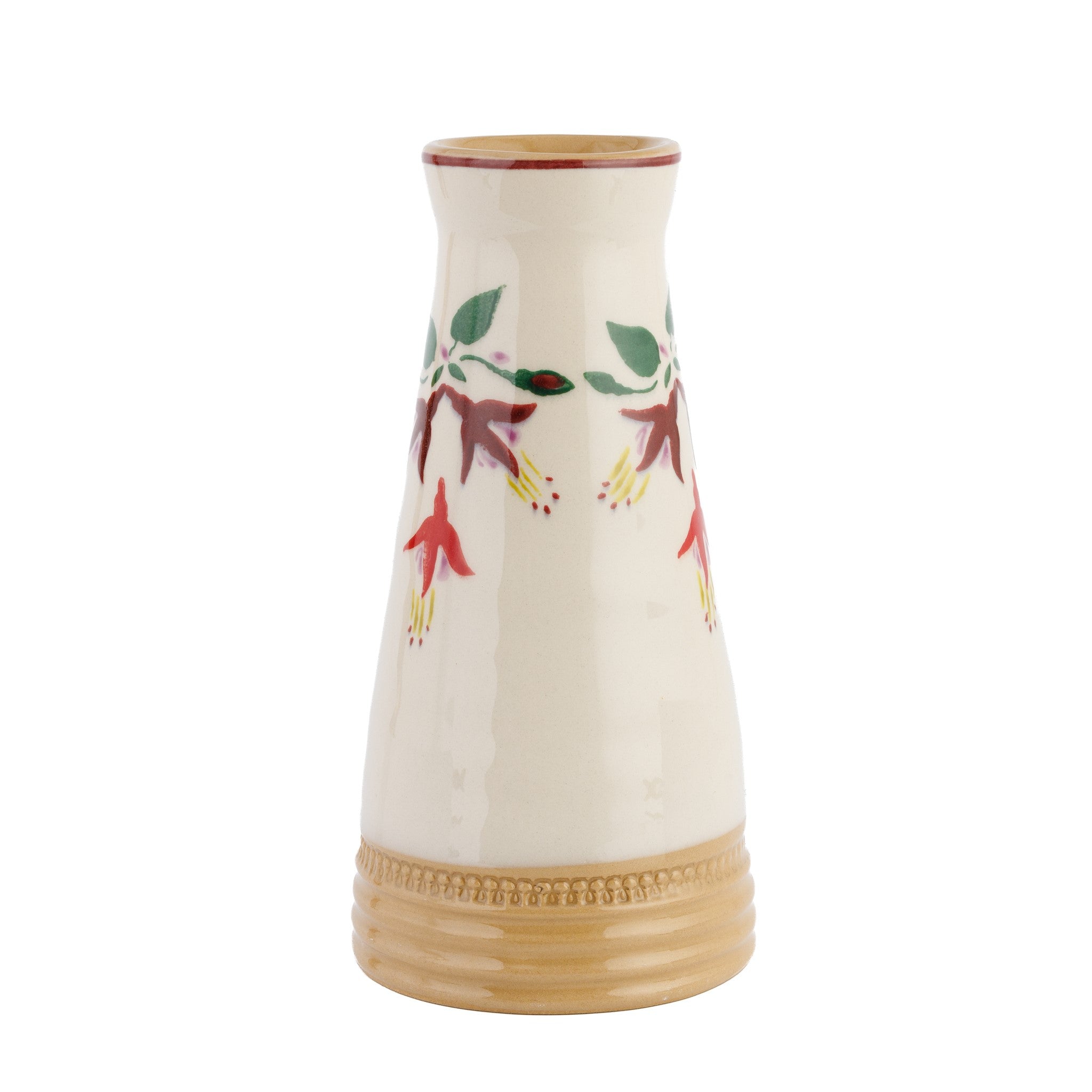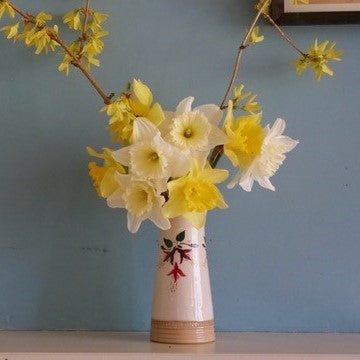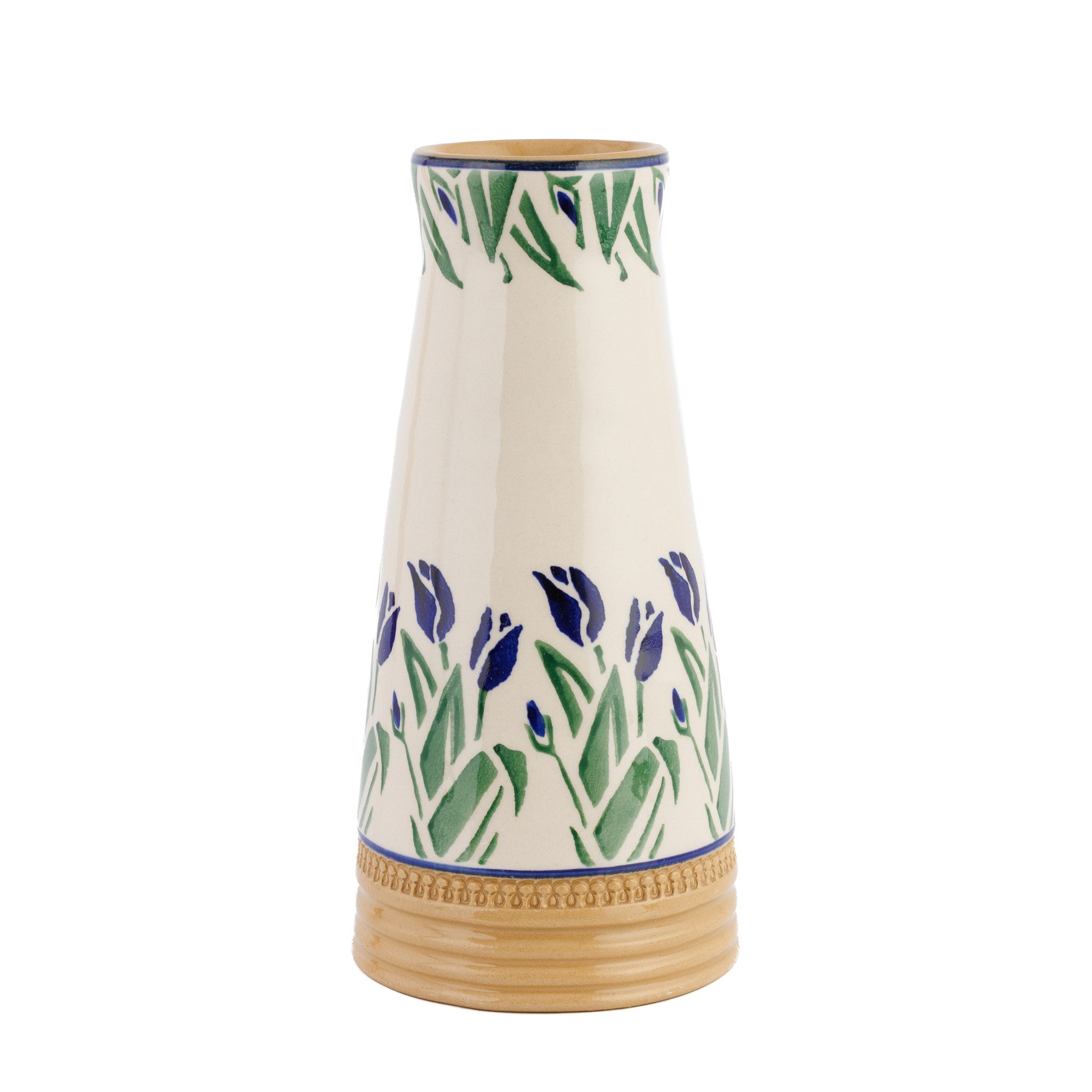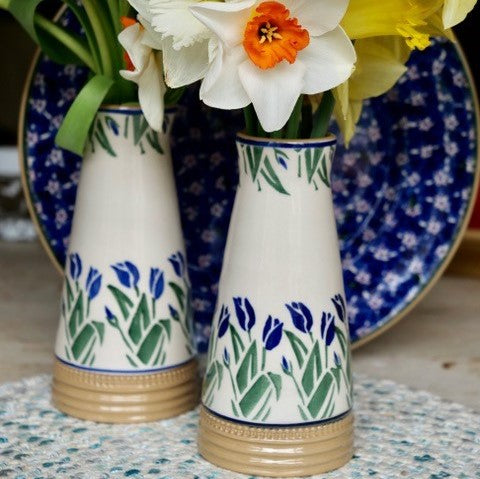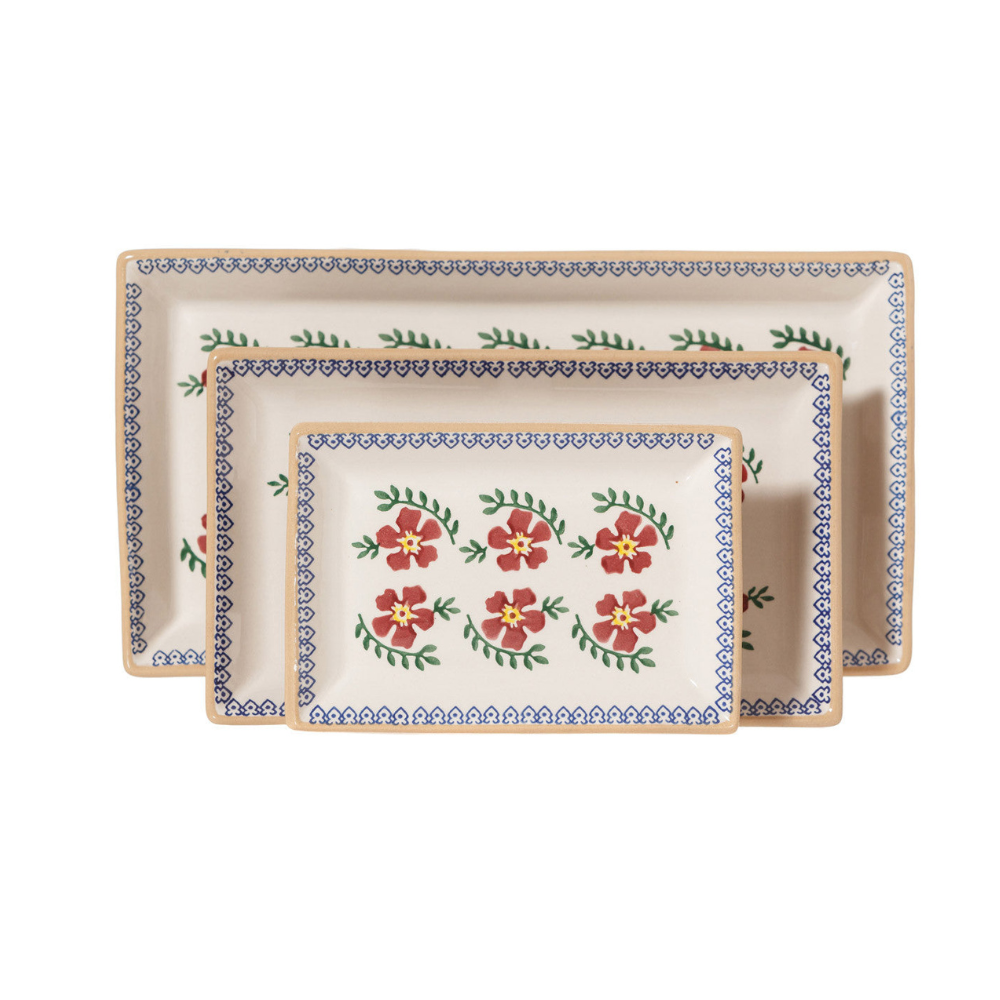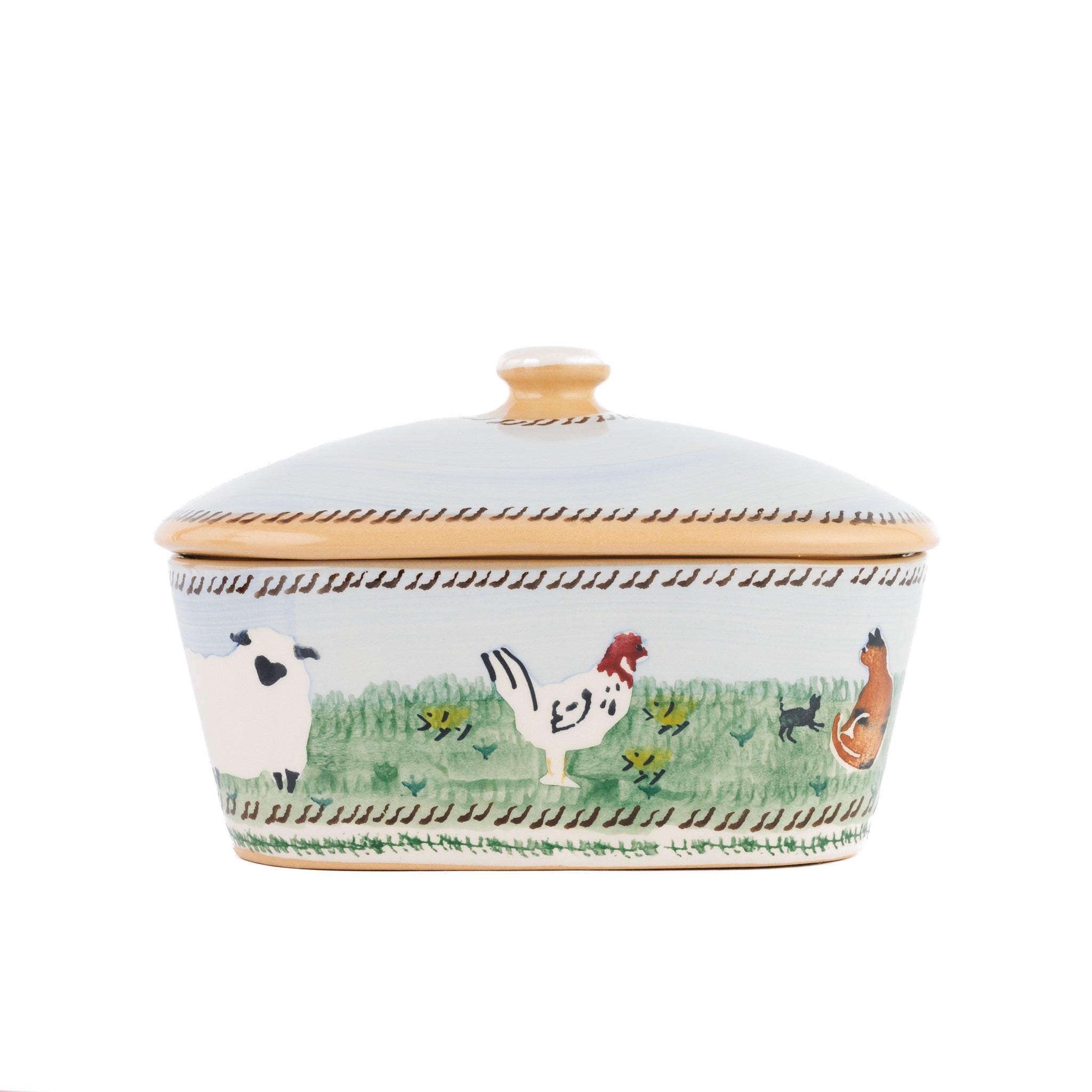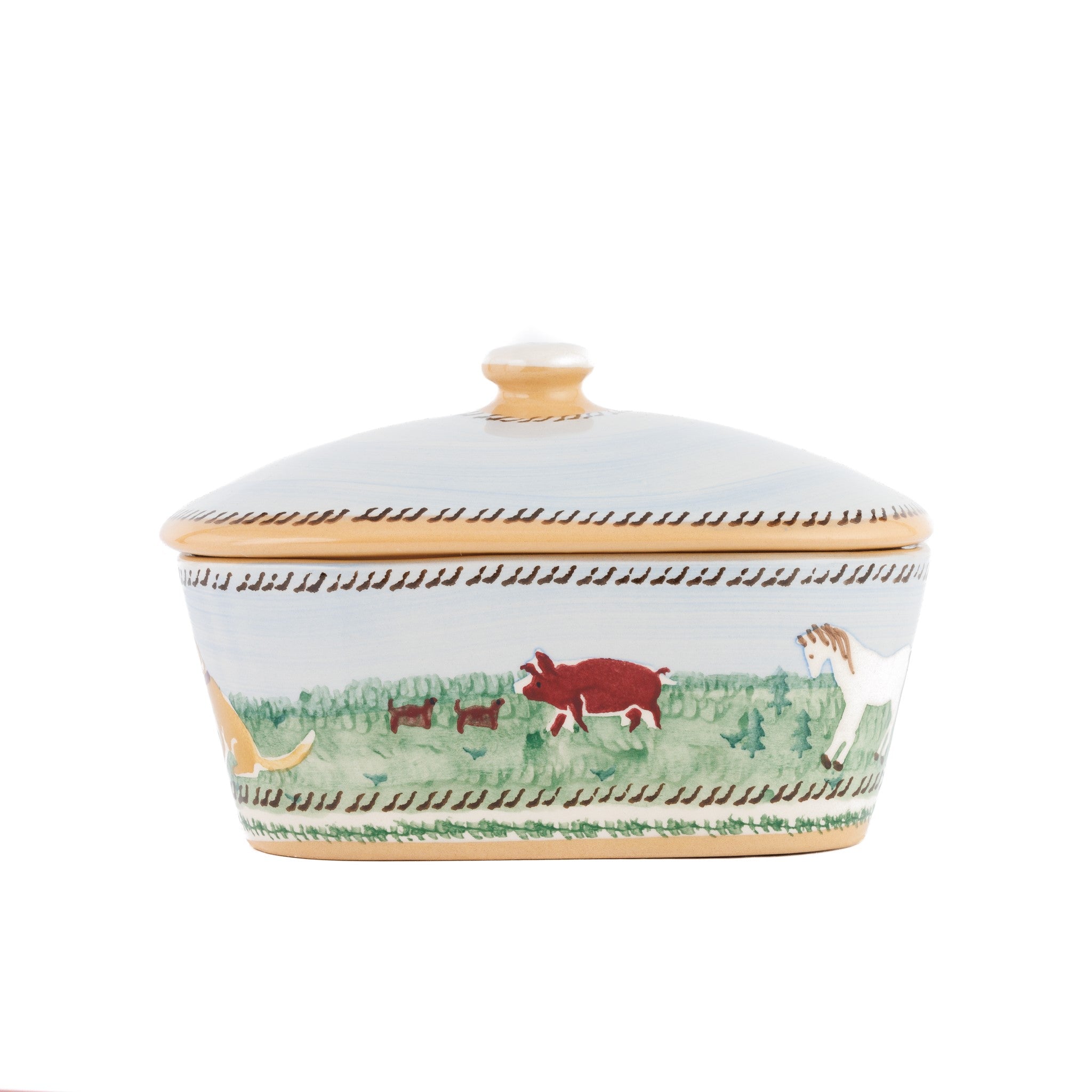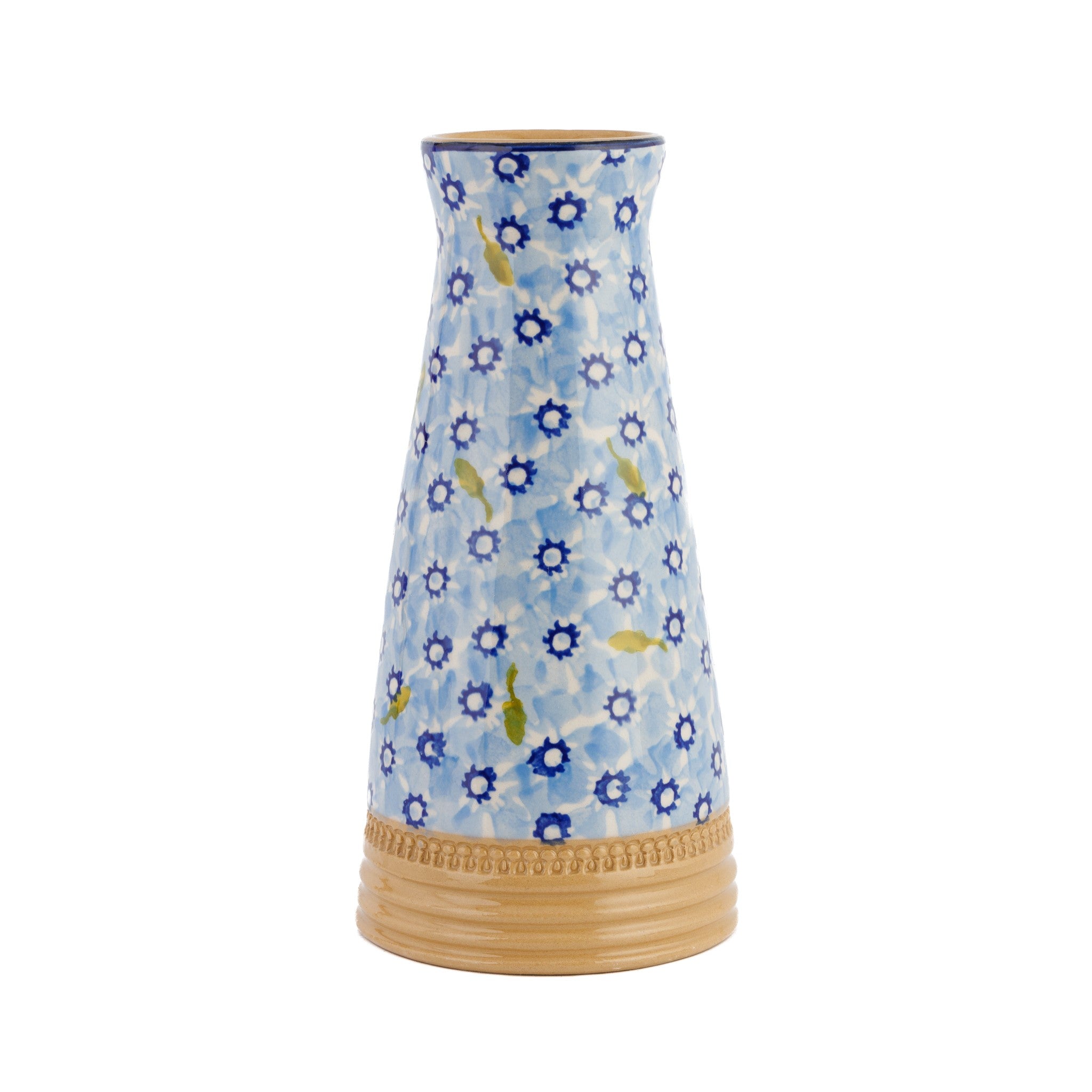Always a linen fan when it comes to summer clothing, (yes, even Irish summers can warrant a shift to this light and cool material often known as “rich wrinkles”), my admiration for flax, linen’s parent plant, has deepened during the development our new(ish) range of textiles. It truly is a wonder.
First of all, with my botanical artist’s hat on (a woven flax boater to be sure), I’m very much drawn to the blue of the plant’s flowers. Flax plants are not bold and flamboyantly glowing, like the many faces of a field of golden sunflowers, but unassuming, at first a self-effacing shimmer of pale blue, like a mirage, that turns into an upliftingly luminous extension of the sky when in complete bloom.
If you can’t make it to a field of flowering flax for that uplifting burst of blueness, bring the field to your kitchen table with our Light Blue Lawn Pattern.
A big tick for me is that many of the parts of the flax plant, when separated out, can be put to different uses so very little goes to waste. Equally, when flax products reach the end of their lives and become waste, like wool and cotton they can return naturally to the earth with little impact. The seeds are highly nutritious as they are, or useful when made into oil. The by-products resulting from the removal of the flax fibres from the stalk, are used as upholstery stuffing (the ‘shives’) or horse bedding (the ‘tow’) – a linen bedsheet of sorts for our equine friends.
Even the list of processes used to turn the plant’s natural fibres into spun, weavable yarn reads like a wonderful poem:
When it comes to linen, I do have to mention the fact of…ironing. For those of you who might shy away from doing it and opt for wrinkle-free fabrics, I’d like to suggest that you see ironing as an opportunity – as a time to slow down amidst much busy-ness while you listen to a podcast or call a long-lost friend, a moment of quiet meditation, a chance to do something therapeutically practical (you could even fold your ironed napkins into fleur de lis or swans). All good things, so, bring on the linen and all that it brings!
* Rippling – separation of seeds from the stalks.
* Winnowing – chaff is separated from the grain.
* Retting – the process of using moisture and micro-organisms to help separate the fibre from the plant stem.
* Scutching – process of separating woody stem and straw from the flax fibres by passing it through metal rollers.
* Heckling – a process of combing the flax fibres to split and straighten the flax fibres.
Susan Mosse

